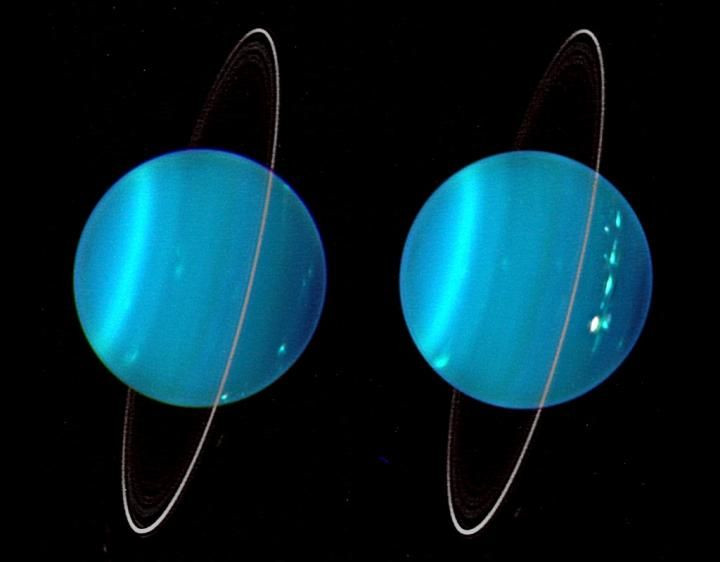Uranus: Strange Tilt Of Ice Giant Finally Explained

When it comes to planetary dynamics, Uranus has been the oddball among all worlds sitting in our solar system. The ice giant is subject to temperatures much lower than those on Neptune, which sits further out in the neighborhood, and is tilted sideways — a strange feature that has puzzled scientists across the globe.
Over the years, astronomers observed Uranus’ poles are not aligned with the sun’s as the planet is spinning on its side. The feature clearly made the planet different from its planetary siblings, but the cause behind this tilt was only a mystery until an international team, led by scientists from Durham University, United Kingdom, came to the rescue.
As it is highly unlikely that Uranus came to be this way, several scenarios have been suggested to explain the tilt. The most supported theory was that of a massive collision, one in which a celestial body smashed the planet sideways. However, an interaction like that is supposed to strip the planet’s atmosphere, which, in this particular case, is still present.
“Uranus spins on its side, with its axis pointing almost at right angles to those of all the other planets in the solar system,” Jacob Kegerreis, the lead author of the latest work, said in a statement. “This was almost certainly caused by a giant impact, but we know very little about how this actually happened and how else such a violent event affected the planet.”
This is why, to delve into this collision, Kegerreis and team ran a series of high-resolution simulations. They explored as many as 50 smash-up scenarios to determine which best explains the tilt and the freezing conditions currently prevailing on the planet.
The findings of the work revealed about four billion years ago when the solar system was going through the chaotic phase and planetary bodies were still settling in, a protoplanet — a world in the process of formation — made from ice and rock might have struck a grazing blow on Uranus.
According to the simulations, the protoplanet would have been twice as big as our Earth, which means the interaction was probably strong enough to smack Uranus (14 times bigger than Earth) sideways, but not enough to strip the planet’s atmosphere.
The violent collision, as the simulations suggested, affected Uranus’ evolution over ensuing billions of years and shaped the planet into what it is today. Essentially, the team found debris from the impacting planet might have formed a thin shell near the edge of Uranus’ layer of ice. This shell, according to the researchers, might have trapped heat from the core and contributed towards chilling temperatures on the planet.
This collision even explains the formation of inner Uranian moons. While running the simulation, the team found the interaction between the protoplanet and Uranus would have thrown out rock and ice into the planet's orbit. This material later coalesced, bringing the moons into existence.
The study titled, "Consequences of Giant Impacts on Early Uranus for Rotation, Internal Structure, Debris, and Atmospheric Erosion," was published July 2 in the Astrophysical Journal.
© Copyright IBTimes 2025. All rights reserved.





















